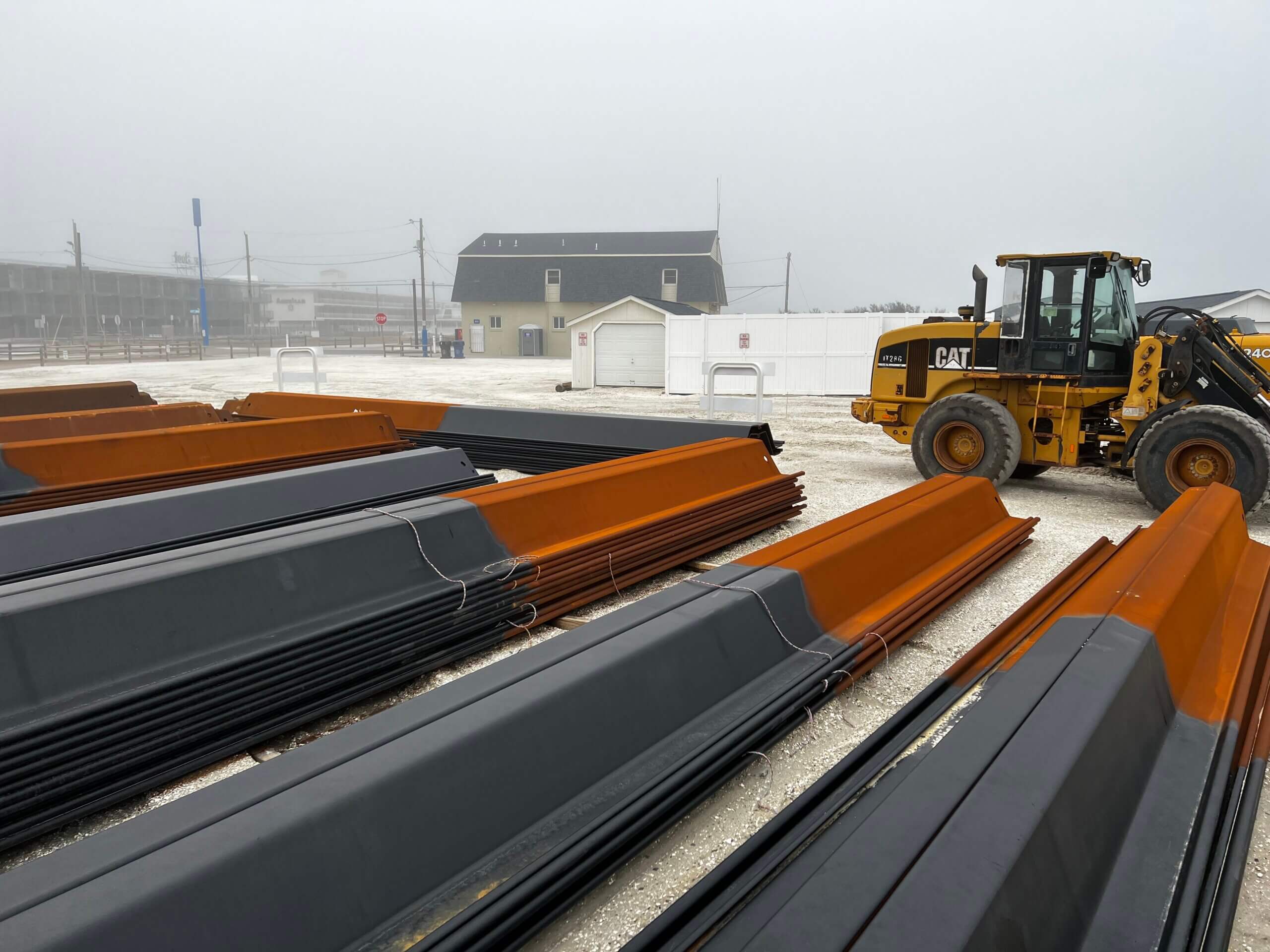NORTH WILDWOOD – The city’s request for emergency authorization to install a bulkhead on the oceanfront — spanning two and a half blocks near where a dune recently was breached — was denied by the state Department of Environmental Protection Wednesday, Jan. 31.
North Wildwood applied to file an emergent motion in Superior Court’s Appellate Division Friday, Feb. 2, and the court granted permission Monday, Feb. 5. North Wildwood’s motion is due to be filed Thursday, Feb. 8, with response from the DEP required no later than Feb. 14.
“I was not surprised,” North Wildwood Mayor Patrick Rosenello told the Herald of the DEP denying the city’s emergency request. “It is pretty much what I have come to expect from the DEP lately.”
According to city officials, multiple January storms resulted in a significant loss to the beach berm and remaining dune system, “leaving a multi-block section of the city at peril.”
The city asked the DEP to grant the emergency authorization, which would have allowed it to construct a bulkhead connecting an unauthorized, existing one – which ends between 12th and 13th avenues – to another existing bulkhead at 15th Avenue, which the DEP authorized last fall.
In its Jan. 19 request for emergency authorization to build the new bulkhead, Peter Lomax, North Wildwood’s environmental consultant, told the DEP conditions resulted in a breach of the dune between 13th and 14th avenues, causing further damage to the dune and vegetated areas behind it.
However, the DEP determined the situation is not an emergency, writing that North Wildwood fell short of the two-prong standard to grant an emergency authorization, which requires the city to demonstrate that “a threat to life, severe loss of property, or environmental degradation exists or is imminent” as well as that the emergency “can only be prevented by undertaking a regulated activity, and … is likely to occur, persist, or be exacerbated before the [DEP] can issue authorization under a general permit.”
Colleen Keller, the DEP’s assistant director in the Division of Land Resource Protection, wrote in a Jan. 31 letter to City Administrator Nicholas Long that “no such imminent threat exists, despite the initial impression that may be given by the photographs and video footage submitted by” North Wildwood.
However, Rosenello said in an interview the situation is an emergency, adding that nothing remaining in the area meets the DEP’s own definition of shore protection.
“There is nothing in between 13th and 15th Street that, in any way, shape or form resembles anything coming close to the definition of a shore protection structure. It is flat scrub area with some bushes and some grass that wouldn’t stop a one-foot tidal surge, let alone an eight- or nine-foot tidal surge that you would typically see during a nor’easter,” the mayor said.
Keller wrote that the DEP “does not disagree that there is erosion that must be addressed” but “disagrees that this erosion represents the imminent threat required” for emergency authorization.
According to the DEP, which said it had representatives conduct a field visit, “a vegetated dune system and wetlands remain.”
The DEP also said the existing buffer is adequate, writing, “Within the area in question, existing public infrastructure (i.e., concrete walkway and stormwater management system) is located approximately 100 – 160 feet landward of the eastern edge of the dune system, with privately owned structures approximately 200 feet landward.”
Keller wrote that the DEP remains committed to North Wildwood’s shore protection efforts and in a separate letter, also dated Jan. 31 and sent to Long, the city administrator, and Lomax, the city environmental consultant, said there are still deficiencies in a permit application the city submitted in 2020 to address the area.
Keller suggests North Wildwood “develop the submission of the deficient materials” and, in doing so, suggests the city keep a few things in mind.
The first is “relocation of the unauthorized bulkhead from 7th Avenue to [between 12th and 13th and 15th avenues as landward as possible will serve to locate the bulkhead the maximum distance from direct wave attack.”
But that isn’t feasible, Rosenello told the Herald.
“The entire storm system for the entire east side of the town runs under the bike path, which is directly adjacent to that bulkhead,” the mayor said. “We have explained to them that we cannot move the bulkhead any further west without incurring tens of millions of more dollars in expenses by relocating the storm system.”
Other recommendations from the DEP include adding rocks on the ocean side of the bulkhead and introducing more sand onto the beaches and dunes.
“Those design changes would present almost insurmountable design and cost prohibitions,” Rosenello said. “The seawall extension alone would probably be tens of millions of dollars, and we know how many millions of dollars trying to bring sand in when we don’t even have a place to bring the sand from.”
Rosenello said the disconnect is that the DEP isn’t looking at the problem and its complexities with the same level of expertise as the city in the agency’s review of the emergency authorization request.
“We have repeatedly asked them to provide engineered drawings showing what they are requesting, and they don’t do that. They are taking our professionally stamped engineer’s drawings, lay people are reviewing them and commenting on them, and then not providing us with professional engineer’s drawings in response,” Rosenello said.
“That’s the disconnect. Our engineers are telling their lay people what is possible, from an engineering standpoint, and instead of [the DEP] submitting engineered plans back, showing us how what they want us to do would work, they just keep trying to tell our engineers to redo things.”
Contact the author, Shay Roddy, at sroddy@cmcherald.com or 609-886-8600, ext. 142.








